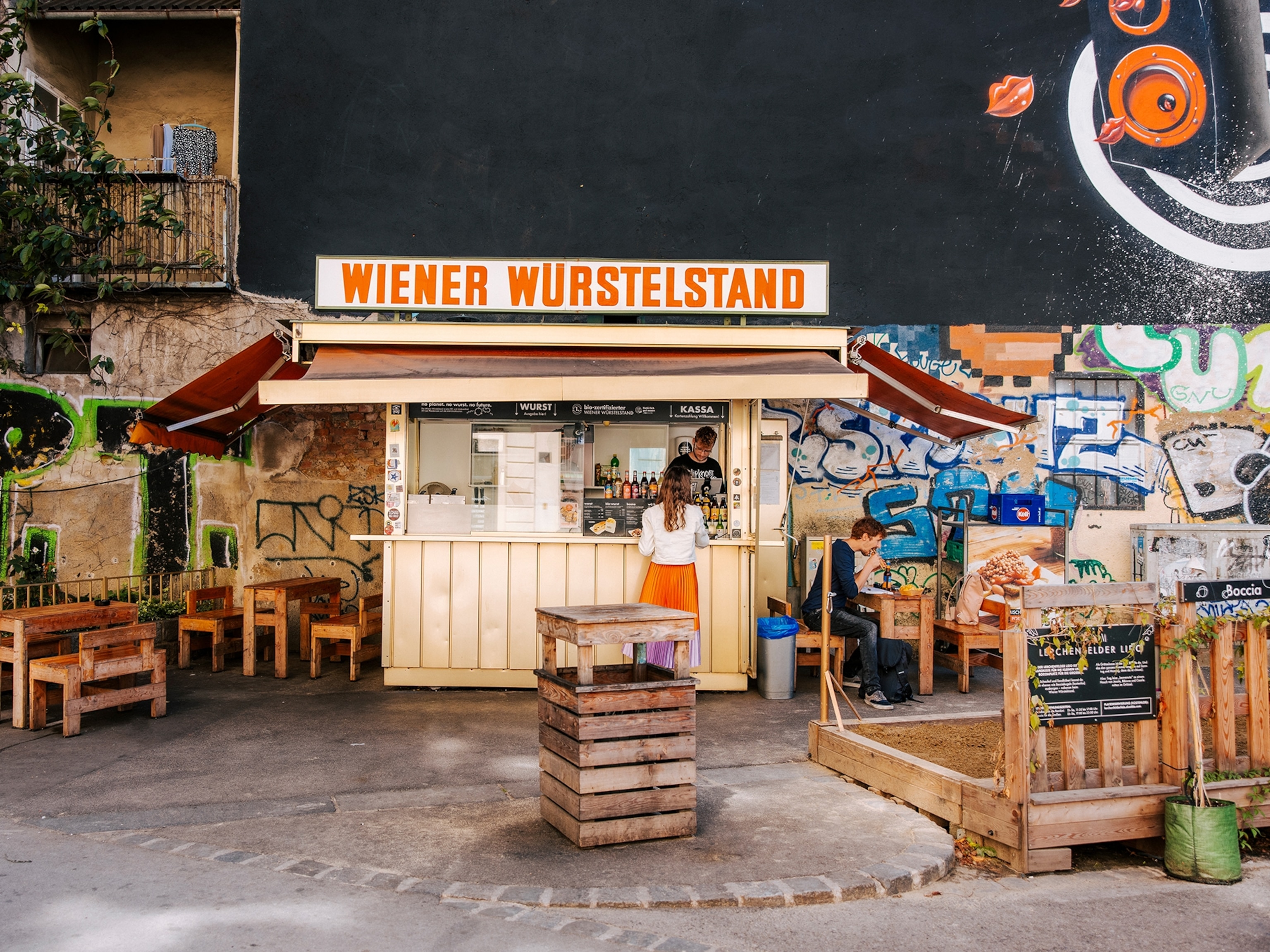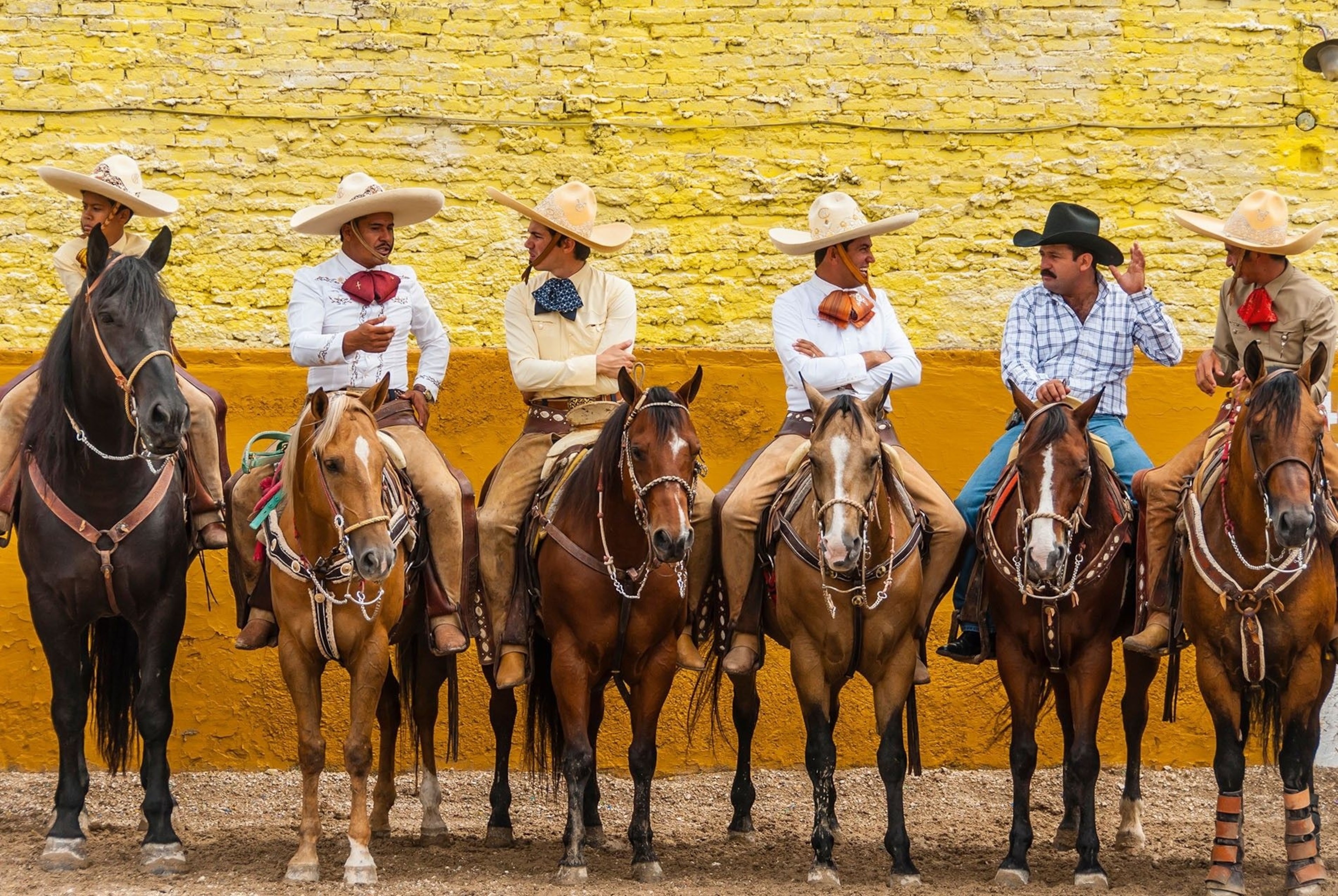
From agave to Zacatecas: the A to Z of Mexican food
With its snow-capped peaks, seafood-rich ocean waters and cactus plains, Mexico’s landscape is as colourful and varied as the cuisine it produces. We’ve compiled a guide so you can be confident you know tequila from raicilla and tamales from nopales.
A for agave
The hardy agave plant, an unassuming succulent that carpets the deserts of central Mexico, makes for some of the best spirits in the world. Once unfairly dismissed as the kind of paint-stripper tequila that made you shudder as a student, artisan agave spirits have been rediscovered by a new generation of producers in Mexico — and drinkers worldwide are catching on. Only the hearts, or piñas, of the blue agave are used to make tequila, which can range from platinum-clear blanco to liquorice-rich reposado, aged for sipping. Meanwhile, a variety of agaves go into producing characterful mezcal. For this spirit, the piñas are roasted — rather than steamed, as in tequila — to create the drink’s distinctively smoky, almost peaty, taste. The agaves used in complex raicilla (‘little root’) — once a sort of moonshine for the farmers of southwest Jalisco — are also roasted, but usually single-distilled. Made from the huge range of agaves that flourish in the greener states, this is a gourmand’s drink: funky, vegetal and a mix of berries and chocolate. LD
B for bugs
Mexico’s edible insects extend beyond the usual gusano (worm) in a mezcal bottle. Favoured for their nutritional properties, insects can be found in markets and restaurants. Try snacks including jumiles (stink bugs), chicatanas (winged ants), escamoles (ant larvae), and alacranes (scorpions), also used as garnishes or — in the case of chapulines (grasshoppers) — to flavour moles (sauces). KA

C for chef
Art, folklore and fashion come together on the plates that Martha Ortiz turns out at her celebrated restaurants, Dulce Patria in Mexico City, and Ella Canta in London. One of Latin America’s most celebrated chefs, Ortiz won hearts in the UK with her turn on MasterChef, where she guided contestants through the showstopping menu at Ella Canta. Fine dining meets farmhouse on her menus, which are structured around theatre. In London, the a la carte begins with an ‘overture’ of appetisers, such as guacamole with grasshoppers, followed by a rich ‘main act’ of, say, duck with unctuous mole, then takes a bow with a bowl of delicate churros. It’s food that you might find amid the sizzling grills and perfumed smoke of a Mexican street market — but with Ortiz’s signature, ever so slightly surreal, flair. “Mexican food is the most interesting in the world,” she says. “Magnificently powerful, it hypnotises the eyes before you even taste the dish.” LD
D for 'drink of the gods'
Hipsters have laid claim to Mexico’s oldest drink: pulque, a viscous, low-alcohol drink made from the fermented sap of the maguey plant and traditionally flavoured with tropical fruit juices like guava. A sacred drink for the Aztecs, it was historically drunk during religious rituals; today, in the pavement bars of Querétaro and Cuernavaca, near Mexico City, students drink it by the litre, often accompanied by tacos. In its natural state, it’s a little sour and yeasty, but modern pulquerías (taverns specialising in pulque) flavour the drink with everything from pine nuts to red wine. One of Mexico City’s oldest, La Antigua Roma, comes with saloon-style swing doors and a retro sign above the entrance reading ‘men only’. Inside, barmen use a hollow gourd to ladle pulque into a traditional, litre-sized glass known as a cañón. Sit at a plastic table beside the hatch, where women used to collect takeaway pulque for their husbands, and watch life bustle past on the street outside. LD
E for empanadas
One of the country’s most versatile snacks, this dough pocket is filled with savoury (or occasionally sweet) ingredients and baked or fried. Empanada fillings vary regionally, with options including spicy pork, chicken, prawns and plantain. KA
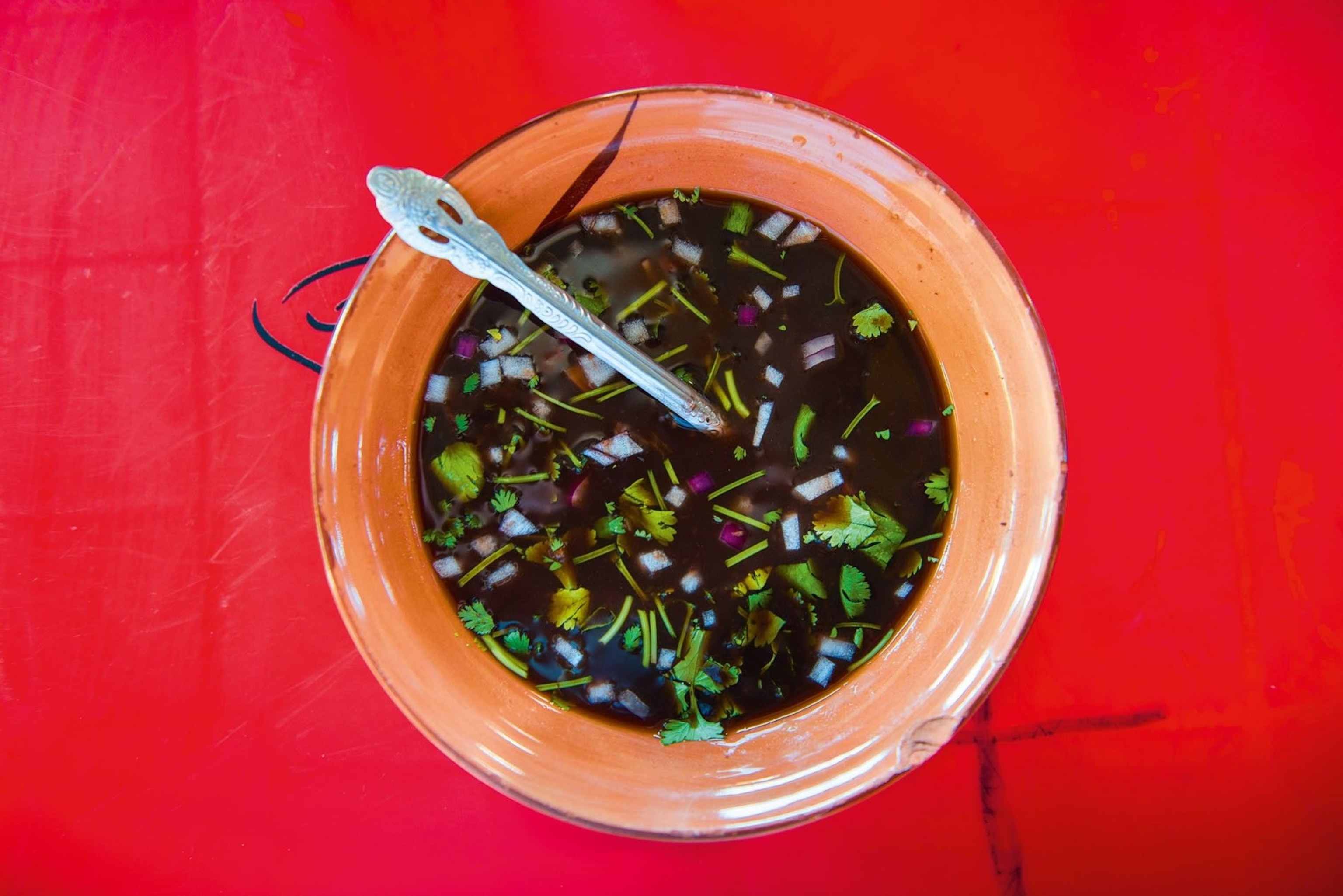
F for frijoles
Beans — or frijoles — are used in the majority of Mexican dishes, whether accompanying meat dishes or used as a filling in molletes (open-faced sandwiches) or gorditas (stuffed pastries). Speckled pinto beans form the base of frijoles refritos (a dish of cooked and mashed beans), while black beans are used in sauces, soups and fillings for enchiladas and burritos. KA
G for Guanajuato
It’s worth making the trip to this central Mexican city for one restaurant alone: family-owned Casa Mercedes, where chefs painstakingly recreate historic recipes. Moles are made by hand, with a molcajete used for grinding spices. Try the signature slow-cooked pork shank or seasonal escamoles (ant larvae) with grasshoppers and guacamole. KA
H for huaraches
A base of fried masa (corn dough) is shaped to take the form of a Mexican huarache sandal, then topped with ingredients like salsa, onion, potato, minced beef and cheese. It’s a popular choice in Mexico City. KA
I for ice
Raspado (shaved ice) is a popular street treat, served in a cup with flavoured syrups and fruity-salty toppings, such as lime, tamarind and mango. Paletas, the ice lolly version, also come in savoury flavours like cucumber and chili powder. The most indulgent options are rolled in chocolate, nuts, salt or herbs. KA
J for Jalisco
Jalisco is Mexico in miniature, a state that climbs up from the white sandy shores of the Pacific Ocean through sticky, tropical forest slopes to the starkly beautiful deserts north of Mexico City. Mexicans will tell you it’s home to the country’s most beautiful city, Guadalajara, a cobbled, bohemian maze of galleries, churches and palaces with a sprawling forest at its heart. Best known for being ‘the tequila state’, Jalisco’s deserts are hazy with the long, blue blades of the agave plant. Down on the humid coast, fresh ceviche is the perfect dish; however, at higher altitudes, as the temperature drops, the food gets heartier. Birria is the classic Jalisco dish — slow-cooked lamb or goat in a heady paste of tomatoes and spices. If you’re at a food market, look for ortas ahogada — baguettes stuffed with pork in a rich tomato sauce. LD
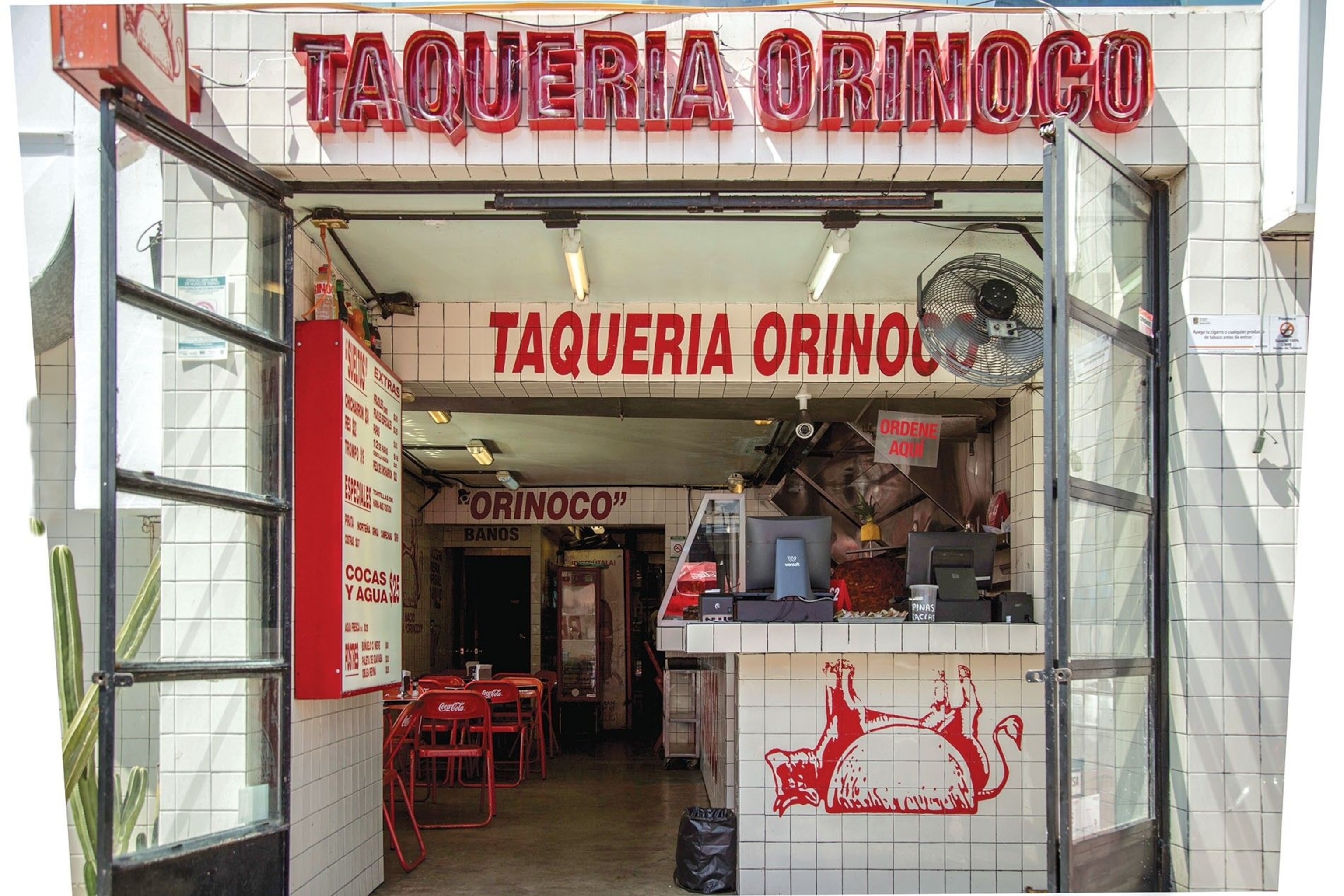
K for kid
Clinging to the green, eastern face of the Sierra Madre mountains, Nuevo León is a sprawling state just south of the US border. Its capital, Monterrey, sits in a natural bowl created by the lofty mountains — an oasis of a city, shaded by forested peaks. This is the state that put the ‘Mex’ in TexMex fare, seducing its northern neighbours with its slow-cooked meat, unctuous sauces and smoky asados. Kid — baby goat — is the classic Monterrey asado (barbecue); it’s typically slow-roasted over a charcoal fire until the meat is melt-in-the-mouth caramelised, then served with frijoles (beans) cooked in beer and a sharp salsa, all scooped up in wheat tortillas. Look out for strips of jerky drying on street corners in the arid north; locals eat it with lime and salt, or fried with eggs for breakfast. LD
L for lager & lime
In the old mining town of Zacatecas, in a sleek bar decorated with paintings by Dalí and Miró, a man pours tomato juice into my beer. To be strictly accurate, it’s Clamato, a particular kind of tomato juice that’s flavoured with clam broth and spices. If a bartender back home in the UK tried to pour clam broth into my beer, I’d walk out. But this is Mexico, so instead I watch as he adds a dash of chilli sauce, a splash of Worcestershire sauce, a little stock and a squeeze of lime. He finishes with a handful of ice cubes and a flourish of chilli powder, then passes me the result: a michelada. Similar to a bloody mary without the vodka kick, it’s delicious — as I knew it would be, having become drawn to the drink while cycling across the country. Michelada is the evolutionary pinnacle of cerveza preparada (‘prepared beer’), which is shorthand for a beer loaded with extras such as salt and lime. The tradition hails back to when Mexican beer bottles were sealed with metal caps that left traces of rust on the neck; drinkers would use a wedge of lime to wipe the rust off the mouth of the bottle and, more often then not, they’d then chuck the lime into the beer. LD
M for masa
Mexico’s culinary lifeblood and oldest cultivated foodstuff, masa is thought to have been grown in Mesoamerica up to 7,000 years ago and was favoured by Toltec, Aztec and Maya peoples. Through an ancient process known as nixtamalisation, corn kernels are softened to become hominy, the basis for a hearty, stew-like soup. The ground corn is then kneaded with water to make masa, the base for myriad tasty treats and staples, including tacos and tamales. KA
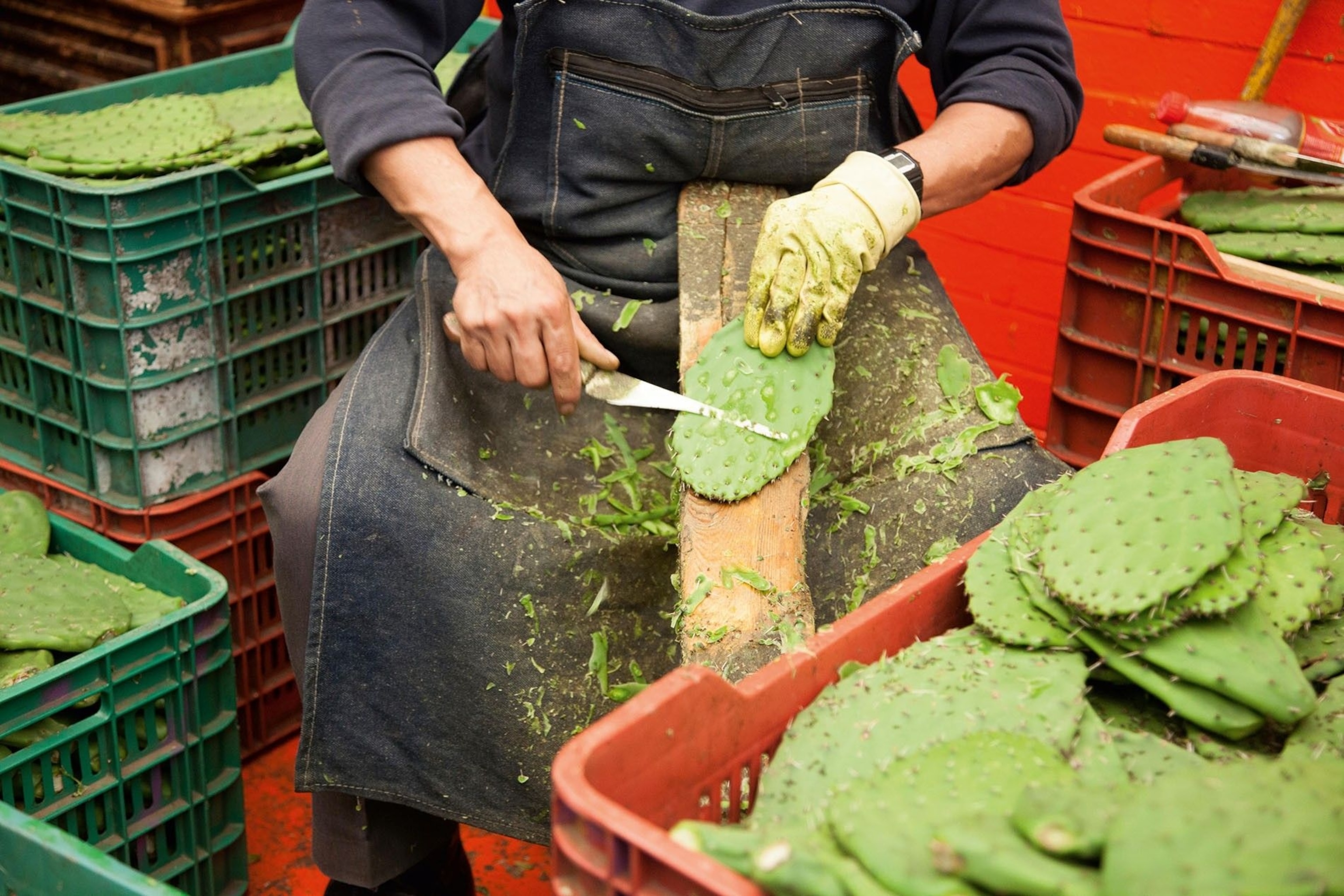
N for nopales
In the mountain towns of central Mexico, where cactuses grow thick in the surrounding desert, old women sit in the markets and de-spike thick leaves at a blinding speed. The resulting smooth, succulent pads are called nopales. Juicy like courgette, gummy like okra and a little bitter, they break down beautifully when pan-fried with onion and garlic. Best of all are nopales in tacos and gorditas, lightly fried or chargrilled and enveloped in gooey white cheese; the finest nopales tacos are found at stalls lining the highways in Durango and Zacatecas states. The leaves are sold everywhere in Mexico, with tinned varieties available too. The nopal plant — otherwise known as prickly pear — also produces succulent fruits. They may look tempting on the cactus, but as any Mexican will warn you, it’s best to let the redoubtable old women pick them for you to avoid being pricked. LD
O for Oaxaca
Oaxaca city, capital of Oaxaca state, has access to some of the country’s best food produce and, as such, is a magnet for the country’s top chefs and finest street food. Your first stop should be Casa Oaxaca, where chef Alejandro Ruiz reinterprets regional dishes including tlayuda (Mexico’s answer to pizza), traditionally sold as street food. At Origen, Chef Rodolfo Castellanos (the 2016 winner of Top Chef Mexico) creates buñuelos, classic South American fritters that he fills with chocolate and a pasilla chilli truffle. Oaxaca’s gastronomic claim to fame is its moles, made from local ingredients including Oaxacan chocolate and chapulines (grasshoppers). Even the empanada is different in Oaxaca; here, it’s like an oversized tortilla filled with tasty delights. The famous empanadas of Fonda Florecita, a food stall in Mercado de la Merced, are stuffed with quesillo (stringy cheese) and courgette flowers. KA
P for puebla
As far as Mexicans are concerned, Puebla is ground zero for mole poblano, one of the country’s many famous moles and its unofficial national dish. Locals prepare and enjoy it on celebratory days, especially on Cinco de Mayo, which commemorates the Mexican Army’s victory over the French Empire at the Battle of Puebla on 5 May 1862. The story goes that the dish was invented by 17th-century nuns of the Convent of Santa Rosa, who used leftovers at hand in a hasty effort to prepare a meal for the visiting viceroy (some versions say it was an archbishop). Think assorted chillies — the principle one being the poblano chilli — plus roasted spices, nuts, stale bread and bittersweet chocolate. Like all good recipes, family disputes occur around what constitutes the ‘best’. Regardless, the final result should be a rich and fragrant sauce, usually served over turkey. KA
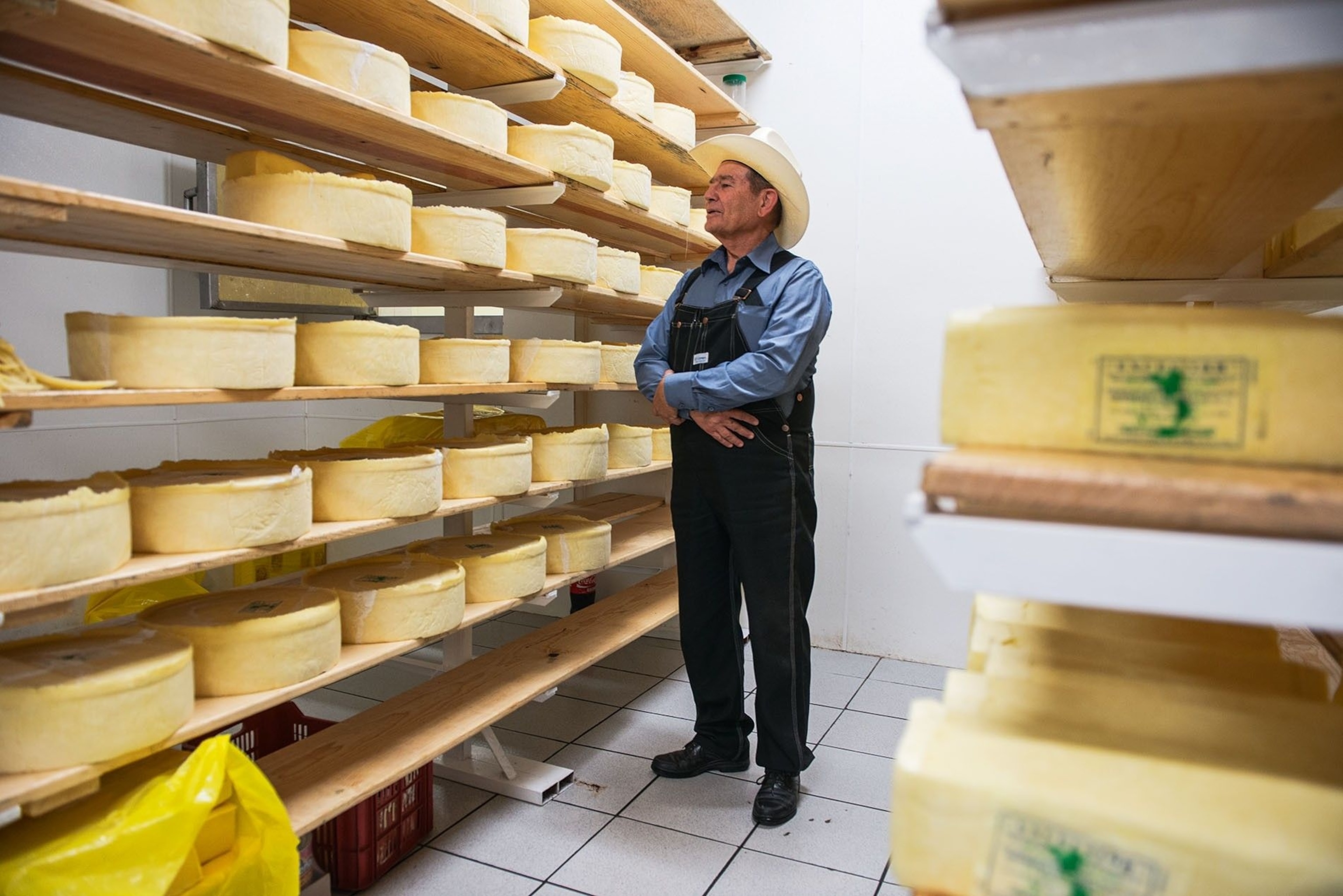
Q for queso
Queso chihuahua, a semi-firm, pale yellow cheese made from pasteurised cow’s milk and sold predominantly in blocks or rounds, is also known by another name: queso menonita, a nod to the Mennonite communities of Northern Mexico, who settled here around 1920. Known for their agricultural skills, Mennonite communities produced local crops such as corn and beans, as well as foodstuffs of their origins (Germany and the Netherlands), including cheese. These days, queso chihuahua is produced across the country and used in a range of dishes, including queso fundido con chorizo (melted cheese with chorizo sausage), and as a deliciously gooey filling for quesadillas. KA
R for rellenos
Some recipes for chiles rellenos, (stuffed chillies) call for fillings of cheese, pork or beef before the chillies are battered, fried and served with salsa roja (red sauce). The best-known version, however, is chiles en nogada, a stuffed poblano pepper as important for its patriotic significance as its flavour. Filled with minced meat, fruit, spices and nuts and topped with walnut sauce and pomegranates, it was the creation of Augustinian nuns in Puebla, who whipped it up in celebratory style for Mexican General Augustín de Iturbide in 1821 to honour Mexico’s independence from Spain. And, given the introduction of the tricolour Mexican flag in the same year, what could be more appropriate than a dish of green (the chilli), white (the sauce) and red (the pomegranates)? August and September are when ingredients are freshest; they’re best sampled at El Mural de los Poblanos in Puebla. KA
S for street food
You’ll know when there’s a festival taking place in Santa Maria del Rio, a village south of San Luis Potosi, thanks to the Mariachi music shaking the windows of the brightly coloured houses. Head to the main square, where food carts are tightly packed along the pavement outside the church. This is proper Mexican street food — and there’s not a burrito in sight. Begin with a taco or two, piled high with slow-cooked meat, salsa and a squeeze of lime, then move on to gorditas (‘chubby girls’): flaky stuffed pastries, often oozing with cheese. Next, try esquites, barbecued sweetcorn kernels swirled with mayonnaise, cheese, salsa, chilli and lime. Leave room for a gooey fried banana, drenched in condensed milk and chocolate sauce, before setting off in search of a mezcaleria for a digestif. LD
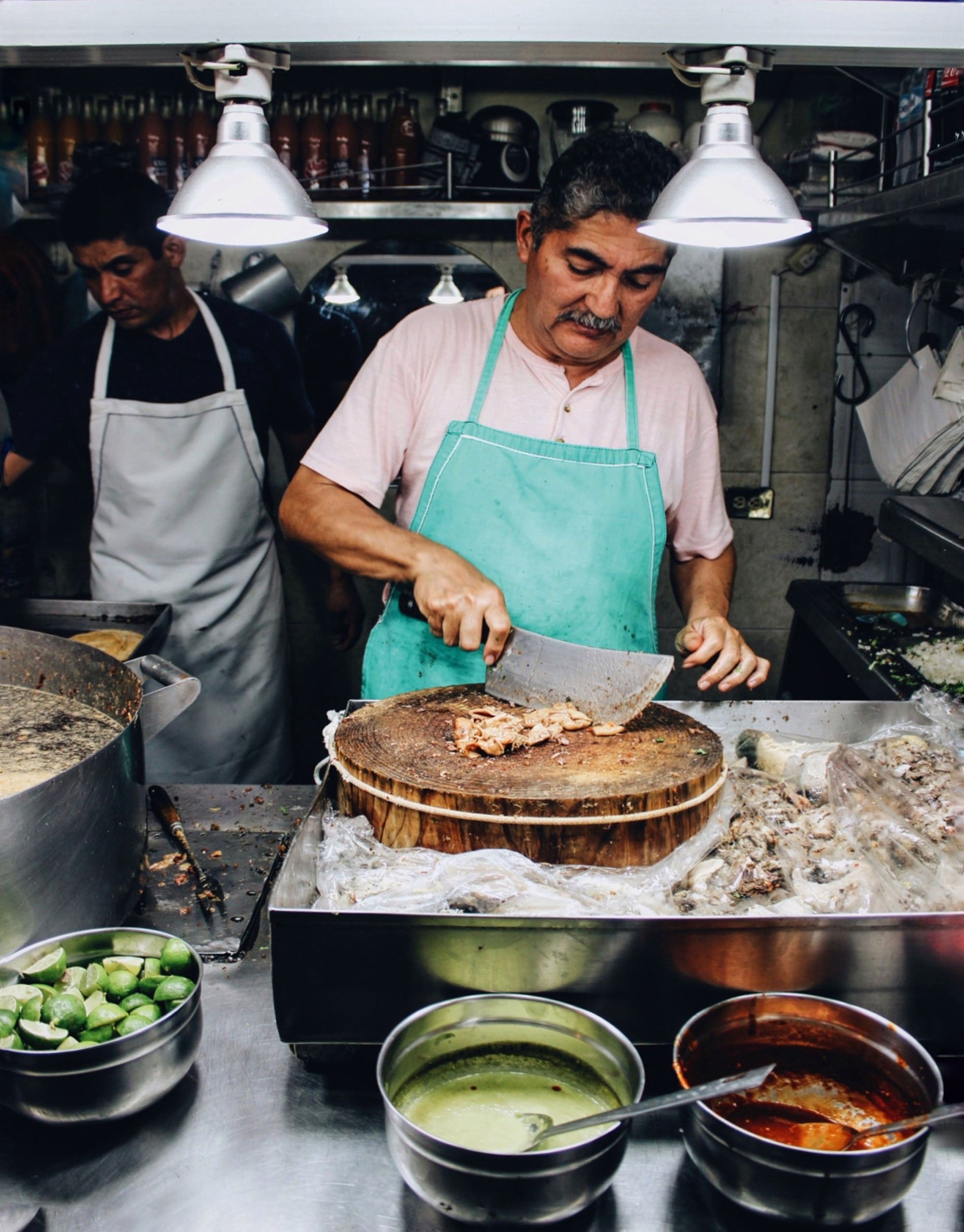
T for tacos
How you take your taco is key in Mexico — the humble street food arguably has more regional varieties than any other dish in the world. From cheesy cactus strips in Durango and juicy steak in Oaxaca to zingy pork al pastor in the central states, the filling in a taco (wheat or maize) is as region-specific as an accent. And that’s just the start; a good taco stand will also offer such toppings as diced onions, coriander, chillies, hot sauce, limes — and many more. Meat tacos are best eaten at night, when the slow-cooked protein is at its most tender. El Vilsito is the classic stop in Mexico City — a car wash by day, it serves carnitas (pulled pork) you’ll dream of for years to come. In Oaxaca City, said to be Mexico’s gourmet capital, head to El Torito Norteño. Charly’s Vegan Tacos, in trendy Tulum, serves indulgent plant-based alternatives, such as pork-free crackling in chipotle sauce. LD
Read more about a taco tour in Mexico City here.
U for unwrap
Derived from the Nahuatl word ‘tamalli’, meaning ‘wrapped’ or ‘encased’, tamales are believed to be one of Mexico’s oldest food traditions. Hunks of masa are filled with anything from meats and cheese to salsas, before being wrapped in a leaf and then steamed or baked. Versatile and portable, you’ll find them throughout Mexico, from high-class eateries to street carts. KA
V for Valle de Guadalupe & Ensenada
The Guadalupe Valley is a strip of vineyards, wineries, biodynamic farms and fine dining in Baja’s cosmopolitan north, near the border with California. Viticulture was imported by Spanish missionaries, and the area is now home to at least 100 vineyards, most of which overlook a stretch of Highway 3, known as La Ruta del Vino. The area is climatically and geographically similar to neighbouring California; its slopes enjoy dry, warm days at the very tip of the desert, plus a cool Pacific breeze. Chardonnay and sauvignon blanc grow well here, as do malbec and tempranillo. Casa Pedro Domecq, near Ensenada, was Baja’s first modern commercial winery, and is a great place to visit for an overview of the region’s winemaking. Santo Tomas claims to be the first commercial winery; its cellar door has spectacular views of the surrounding valley, as well as homemade cheeses and olive oils. Tastings cost between US$8-20 (£6.50-£16), and it’s best to bring cash. LD
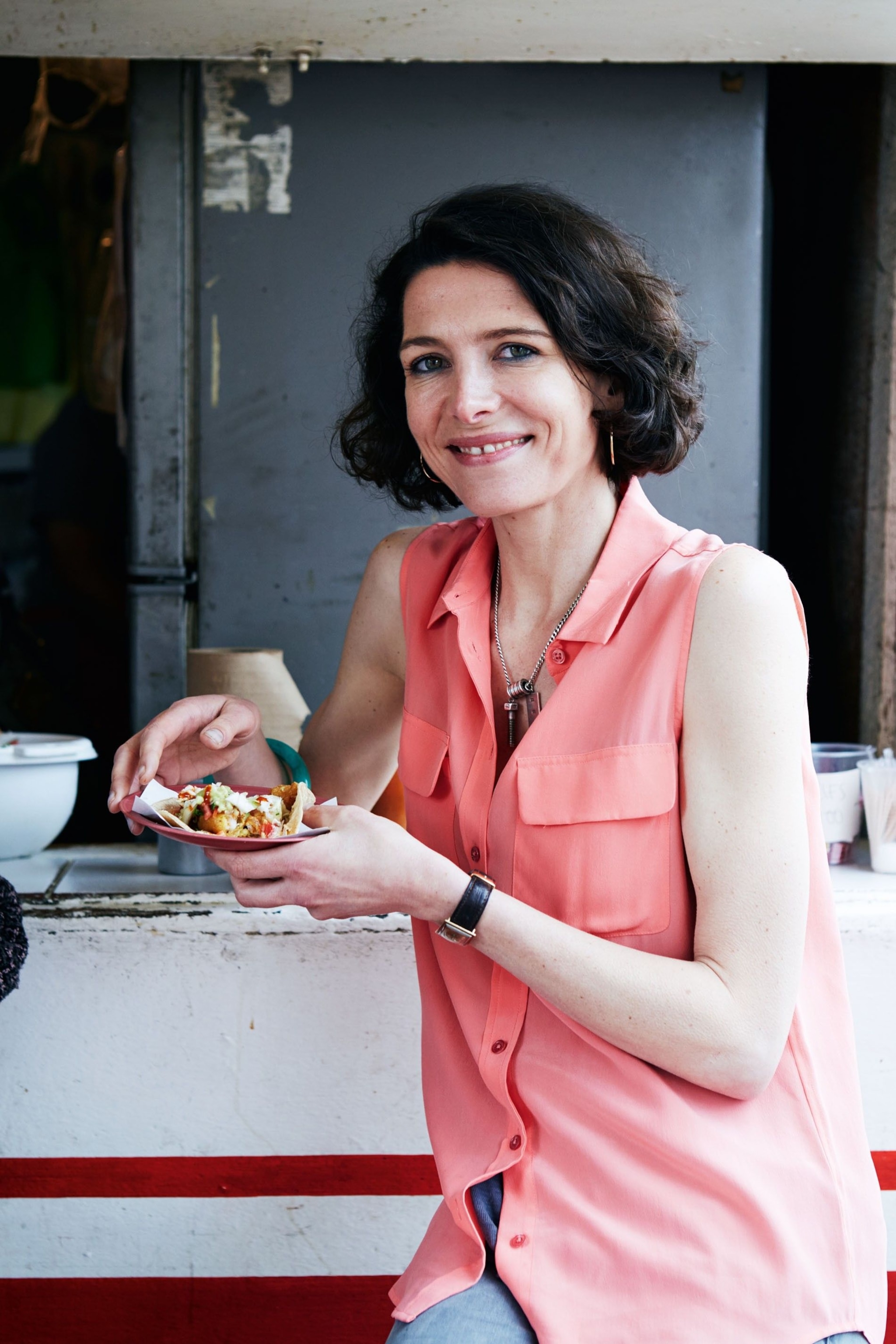
W for Wahaca
This is the pioneering franchise that brought a taste of authentic Mexico to the UK high street. Founded by MasterChef winner Thomasina Miers, it made headlines both for its cooking (including introducing grasshoppers to the menu in 2014) and for its — at the time — fairly revolutionary street food concept. While the menu has always nodded toward TexMex staples like loaded nachos, it also riffs on the kind of regional staples found at markets across Mexico, such as cactus and courgette tacos, and pea and mint empanadas. Thomasina spent years in Mexico City and frequently returns to Mexico with her food team and chefs in search of new dishes and ingredients. Her tip of the moment is Baja: “It feels like a state that’s up for experimenting and pushing the boundaries of what’s possible for food,” she says. LD
X for x-rated
There are more than 100 varieties of chilli available across Mexico — and thousands of ways to prepare them. Be sure to try these four essential chillies:
ANCHO: Shrivelled in appearance, this ripened, sun-dried poblano adds a sweet, raisin-like flavour to dishes. It’s a popular ingredient in moles.
JALAPEÑO: One of the country’s favourites, this chilli is commonly used as a garnish on tacos. It’s often chargrilled or fried, too.
POBLANO: Originally from the Puebla region. Proceed with caution — heat levels can be unpredictable.
HABANERO: A common ingredient in sauces, this chilli brings hefty levels of heat. It’s named after the Cuban capital, Havana. KA
Y for Yucatán
Rich in Mayan ruins, thick jungles and deep cenotes, this state is home to some of the country’s oldest recipes, such as pibil (marinated meat wrapped in banana leaves, then slow-cooked in a barbecue pit). It also has a modern side: Tulum, on the Caribbean coast, is a celebrity magnet and yoga haven with a cool food culture to match. Queue for a table at celebrated chef Diego Hernández Baquedano’s jungle restaurant Mur Mur for dishes that put a modern spin on Yucatán ingredients, or try Hartwood, famed for its zingy ceviche. LD
Z for Zacatecas
When Surrealist artists André Breton, Leonora Carrington and Max Ernst came to Mexico, they settled in its cool, central mountain towns. One of these, Zacatecas, has preserved its reputation as a boho-cool hub for artists, with galleries and boutiques on every corner. So it somehow makes sense that Zacatecas is at the heart of Mexico’s craft beer scene — although maybe it’s a rebellious middle finger to the giant Grupo Modelo brewery just outside town, which churns out bottles of Corona and Pacifico. The city is home to one of Mexico’s best beer festivals, the annual Expo Cerveza Zacatecana, as well as excellent craft beer bars. La Artesana, a punky little bar with plenty of attitude, is located in the historic centre and is one of the best; Coyote Escondido, a little further out, is also brilliant. Look for beers from local brewery Chacuaco Cervecera. LD
Published in the November 2019 issue of National Geographic Traveller (UK)
Follow us on social media
Twitter | Facebook | Instagram | Flipboard



